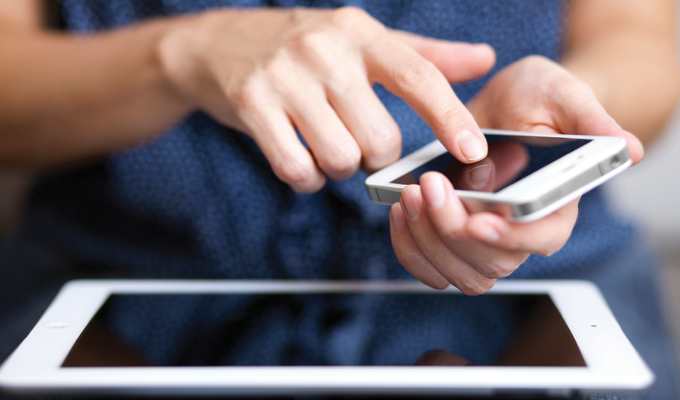Think Before You Click
27 Mar 2017

The use of portable technology is increasing in clinical practice and particularly in hospitals. Clinical images are routinely captured and used by doctors.
Digital cameras, particularly smartphones, enable practitioners and medical students to capture clinical images which are used by clinicians to assist in diagnosis and teaching. These images are valuable in monitoring clinical signs, injuries and lesions. They also provide a useful record for diagnosis, treatment and management, especially in rural and remote areas.
There are significant legal professional and ethical obligations regarding the use of clinical images which form part of the medical record. Distribution of these images and electronic data through mobile devices, internet and social media requires the appropriate consent and an understanding of the requirements for secure storage and disposal of the images.
Case study
While observing patients in an Emergency Department of a teaching hospital, an RMO used his smartphone to take a photograph of a patient who had a large gaping stab wound on his thigh. A registrar asked him to provide a copy of the photograph which was then included in the patient’s clinical records.
The RMO also forwarded the photograph to his medical colleagues and circulated it on Facebook. When the patient obtained a copy of his clinical records, he noticed the photograph and was advised that copies of the photograph had been placed on social media. The patient complained to the Australian Health Practitioner Regulation Agency (AHPRA) as the photograph was taken without his consent.
Discussion
Regulatory agencies around Australia receive an increasing number of complaints regarding improper capture and use of clinical images. Clinical images are “health information, and must be treated with the same privacy and confidentiality as any other health record and information”.1Therefore, it’s essential that appropriate consent is obtained from the patient in order to take the clinical image, store it securely and disclose it in accordance with the patient’s consent or only if there was a legal obligation to do so.1
It’s inappropriate to use clinical images for a purpose other than which consent has been obtained and share them in a non-professional context. To do so may be in breach of relevant hospital policies and may potentially jeopardise the employment of the clinicians concerned.
It’s essential for the doctor to discuss the following information with the patient (or the substitute decision-maker), to ensure they have made an informed decision when consenting to or refusing the collection, use and disclosure of clinical images:
- the purpose(s) of the clinical image, i.e. why the image is being taken
- how the clinical image may be used, e.g. an image could be used in a de-identified form for training, research and education purposes
- who will have access to the image
- whether it might be shared or disclosed to others, and for what purposes
- whether it will be de-identified
- how and where it will be stored.1
The consent and withdrawal of consent must be documented in the medical records – this should include the scope and details of the consent; who took the image and when; to whom it was sent; and the purpose for which it was taken and sent. Some hospitals and practices also have a consent form and policies for the taking of a clinical image, and it’s essential to be aware of these policies and protocols.
Even a clinical condition itself may be recognisable in a photograph, and the rarer the clinical presentation the more likely it may be identifiable. Also, the patient’s identity may be accessible via the metadata, despite other identifiers being removed.
The principles applying to health records regarding use and disclosure also apply to clinical images. This imposes an obligation on the clinician to use and or disclose clinical images in accordance with relevant privacy legislation and all the hospital policies.
In practice, this means clinical images can only be used and/or disclosed:
- for the direct and primary purpose for which they were collected, as originally consented by the patient
- for a secondary purpose closely related to the direct or primary purpose, i.e. where the patient has a reasonable expectation that the clinical image would be used in this way; such as the provision of clinical care including sharing the image with a colleague to confirm diagnosis, treatment and management
- in accordance with the patient’s consent (if the use and disclosure is different from the direct or secondary purpose
- where permitted by law, i.e. the use and disclosure falls within an exception under the relevant privacy legislation.
Summary points
Storage and security of clinical images varies in different hospitals and states. Clinicians must be aware of the systems in their hospital and the processes in place to facilitate secure storage and disposal of digital images.
- Ensure that images do not auto upload to any social media networks or back-up sites.
- Delete any clinical image from your mobile device after saving it to the health record.
- Have controls on mobile devices to prevent unauthorised access
- Contact our Medico-legal Advisory Services team on 1800 011 255 for advice.
Deborah Jackson
Claims and Advisory Counsel
MDA National
Reference
- Medical Indemnity Industry Association of Australia (MIIAA) and Australian Medical Association (AMA). Clinical Images and the Use of Personal Mobile Devices: A Guide for Medical Students and Doctors. November 2014. Available at:ama.com.au/sites/default/files/documents/FINAL_AMA_Clinical_Images_Guide.pdf
Professional boundaries in healthcare - Part 1
Boundaries with patients present in numerous ways every day and all health practitioners
11 Aug 2025
Understanding Professional Medical Indemnity Insurance
Do you understand the ins and outs of professional medical indemnity insurance?
11 Aug 2025
Professional boundaries in healthcare - Part 2
Boundaries with patients present in numerous ways every day and all health practitioners
11 Aug 2025
Understanding changes to the Fair Work Act
What are the changes to the Fair Work Act and what is my role?
22 Jul 2025






